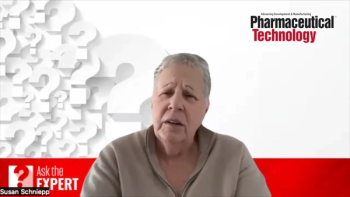
- BioPharm International-03-01-2018
- Volume 31
- Issue 3
Regulatory Role in Bio/Pharma Progress
FDA enforcement efforts and drug approvals trend upward.
A recent report from PwC’s Health Research Institute (1) summarizes long-term trends and changes in FDA activities that occurred in 2017, and the implications for the bio/pharma industry, and offers a performance evaluation for the agency and industry. According to the report, FDA had a good year in 2017; the agency approved 45 new molecular entities, the second highest total in history, and the most generic drugs ever (763 full approvals and 174 tentative approvals). These approval successes came as the number of new regulations declined but enforcement efforts increased.
In addition, a record number of drugs (476) received orphan drug designation in 2017, an indication of the ongoing trend of companies developing specialty and oncology drugs for smaller patient populations. Under the 2017 tax legislation, the tax credit for research and development costs for orphan drugs was cut in half, to 25%, lowering incentive for companies to pursue such research.
Regulations down, enforcement up
The report notes only six economically significant regulations-all unrelated to pharmaceuticals or biotechnology-were released by FDA in 2017, compared with 30 or more in the previous four years. This slowdown was the sole significant “sudden change” observed by the authors. Rulemaking, however, increased in the second years of the Bush and Obama administrations; the report notes that 18 pharmaceutical regulations are under development and could be published in 2018.
While the number of rules decreased in 2017, FDA continued to make policy by issuing guidance documents with user fees, generic drugs, and procedural topics receiving the most attention. The 174 draft and final guidance documents exceeded the average of 152 per year issued under the Obama Administration. Nearly 100 guidance documents are on the Center for Drug Evaluation and Research’s (CDER) agenda for 2018, dealing with procedural changes; quality; chemistry, manufacturing, and controls; and generic drugs.
Overall, FDA issued fewer warning letters in 2017 (510) compared with previous years. However, the 85 letters issued by CDER in 2017 were nearly double the amount issued in 2014. This jump in the number of warning letters was triggered by increased enforcement efforts authorized by the Drug Quality and Security Act of 2013 and many targeted offshore API and drug product manufacturing facilities.
The number of deficiencies found during inspections held steady; failure to have or follow written procedures, failure to scientifically validate testing procedures, and failure to fully investigate discrepancies in manufacturing or testing processes were the most frequent offenses.
Regulatory relief
Scott Gottlieb, who took over as FDA commissioner in May 2017, has demonstrated a strategy to “provide regulatory relief where appropriate, introduce competitive policies and eliminate restrictive ones, and promote innovation and the exchange of information” (1).
That approach should appeal to pharmaceutical executives surveyed by PwC; 36% of the respondents would like to see standards for approval, including minimized regulations for lower-risk products, streamlined. Only 6% would like to see streamlined manufacturing regulations, including manufacturing quality and inspections.
Reference
1. PWC Health Research Institute Insight, “Continue to Take as Prescribed,” February 2018.
Article Details
BioPharm International
Vol. 31, No. 3
March 2018
Page: 6
Citation
When referring to this article, please cite it as R. Peters, " Regulatory Role in Bio/Pharma Progress" BioPharm International 31 (3) 2018.
Articles in this issue
almost 8 years ago
FDA Heightens Drive for Transparencyalmost 8 years ago
Current Challenges in Bioprocesses Developmentalmost 8 years ago
Characterizing a Bioprocess with Advanced Data Analyticsalmost 8 years ago
Computerized Systems Validationalmost 8 years ago
Poseidon Takes on the Pharma Supply Chainalmost 8 years ago
Identifying and Controlling CPPs and CMAsalmost 8 years ago
Employing Spectroscopic Tools in Downstream Process Controlalmost 8 years ago
Biologic NMEs Maintain Strong Presence in 2017 Drug Approvalsalmost 8 years ago
BioPharm International, March 2018 Issue (PDF)Newsletter
Stay at the forefront of biopharmaceutical innovation—subscribe to BioPharm International for expert insights on drug development, manufacturing, compliance, and more.




